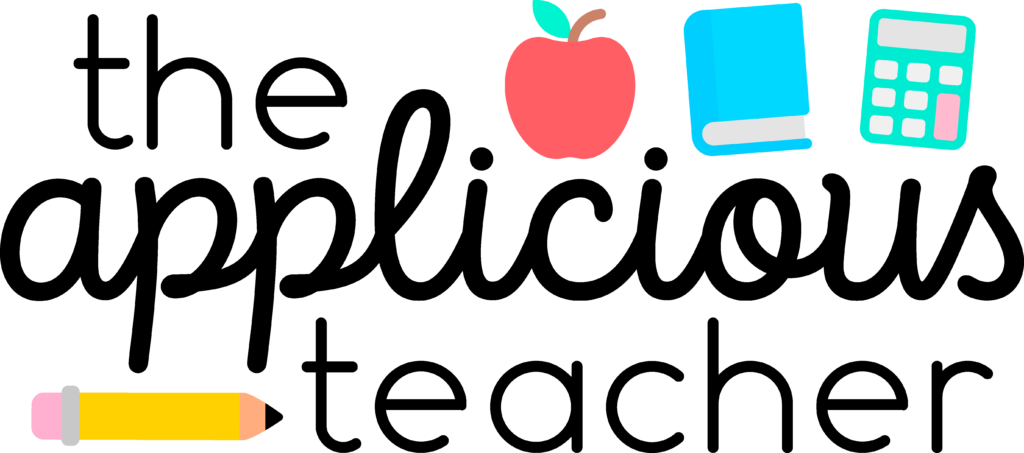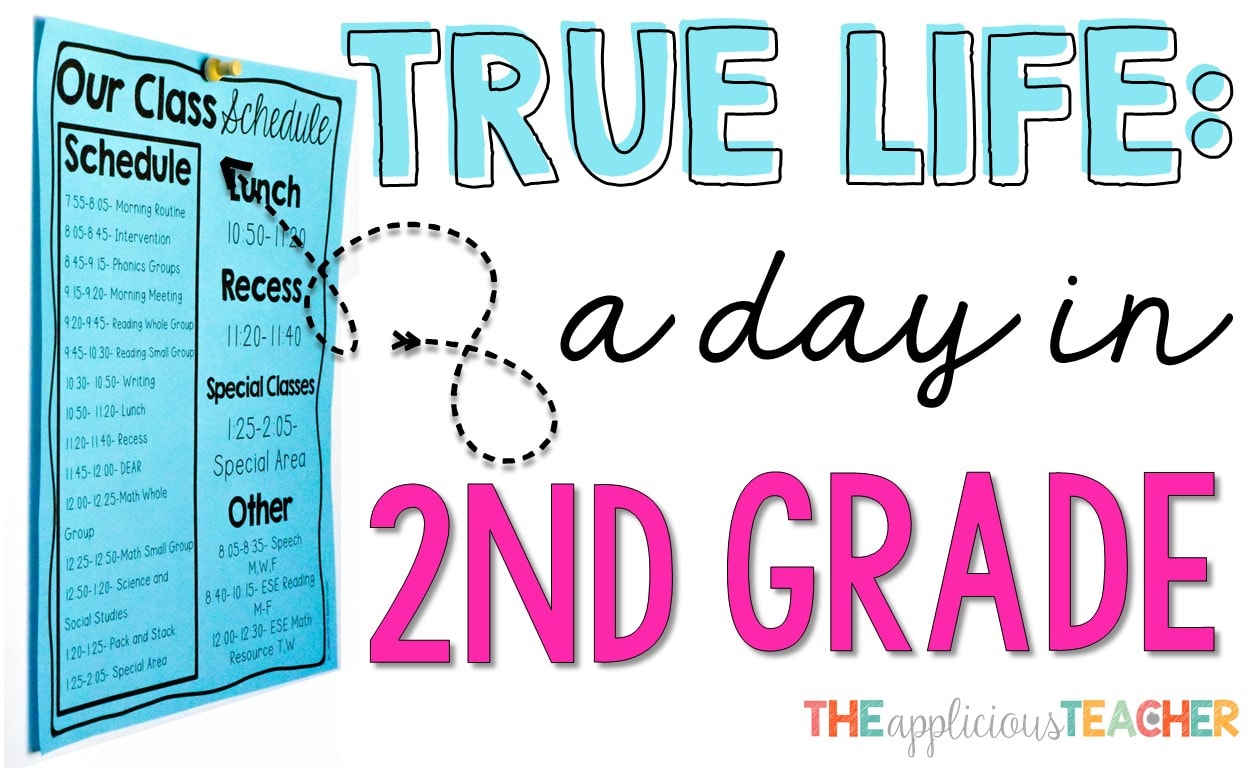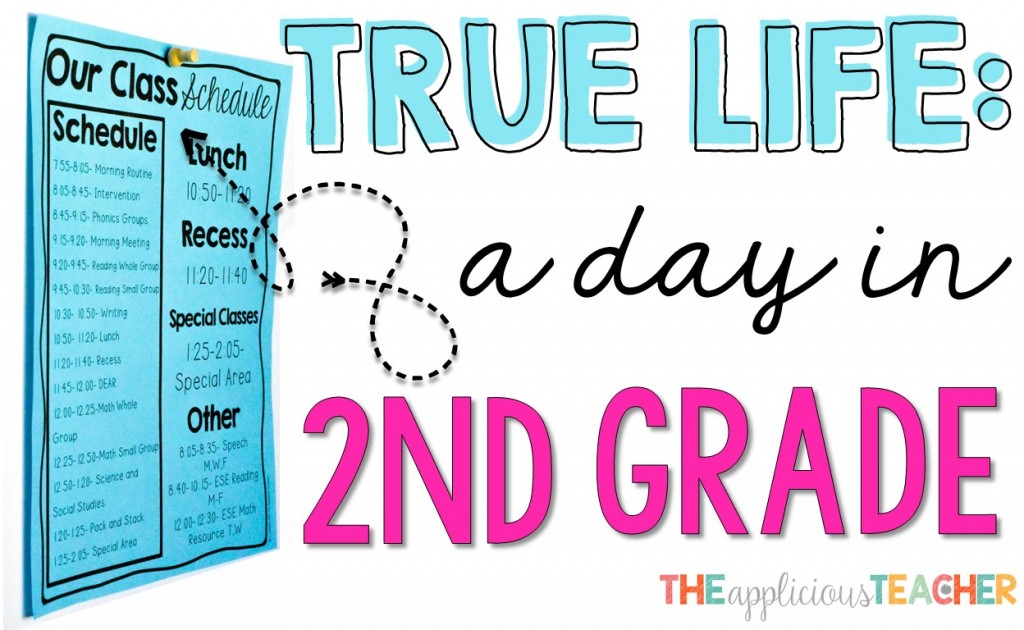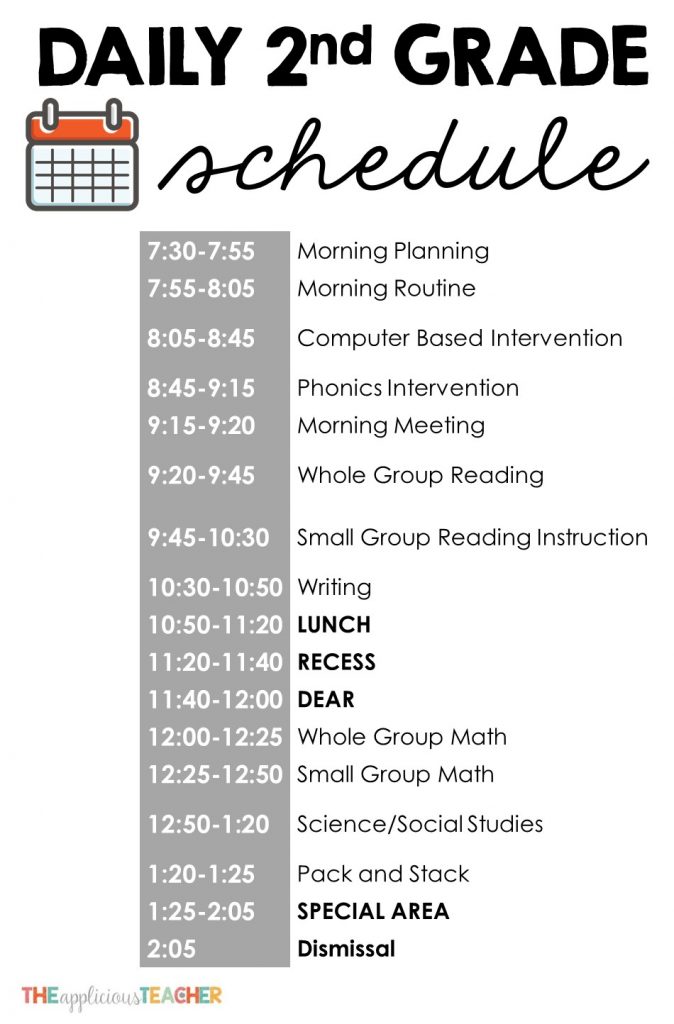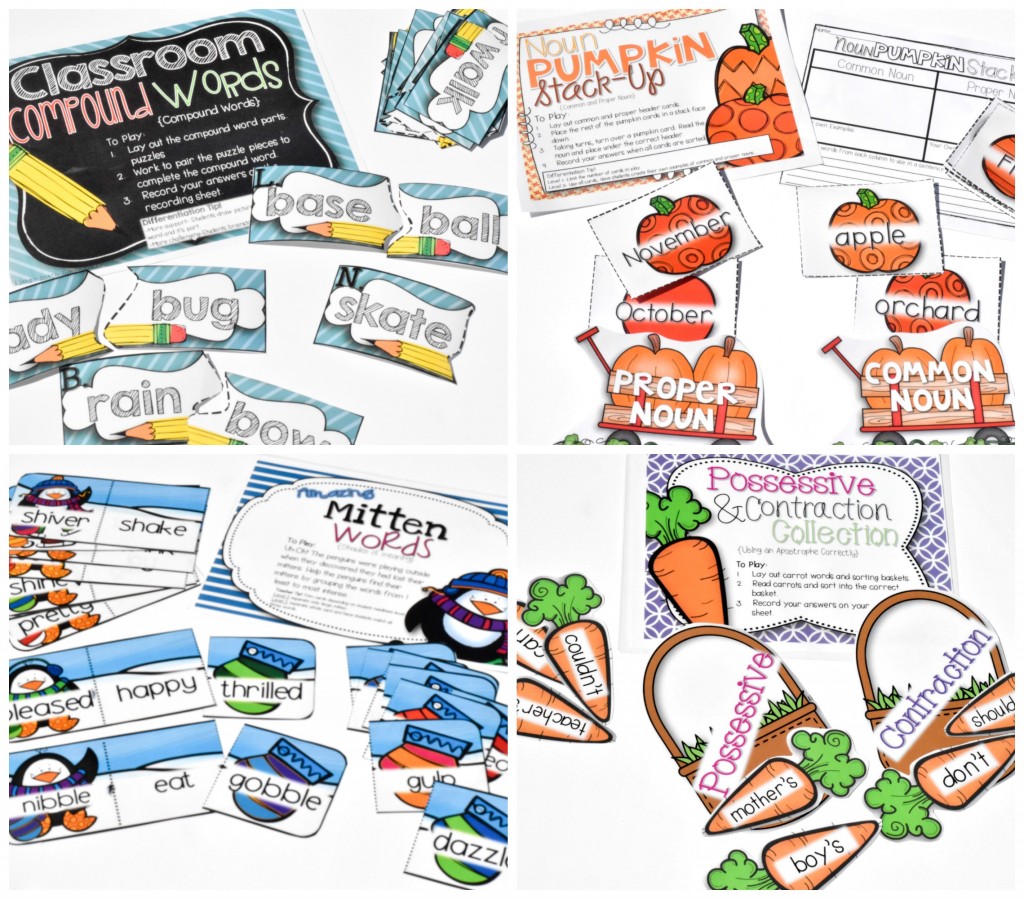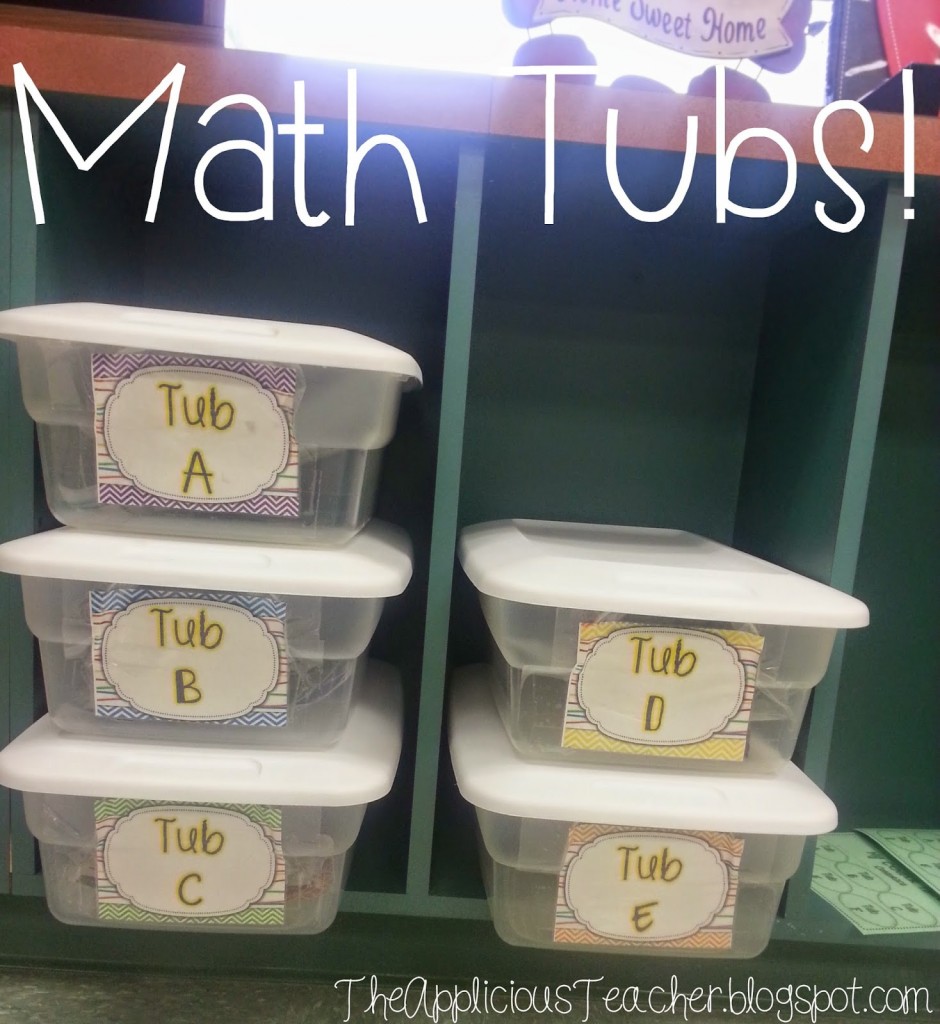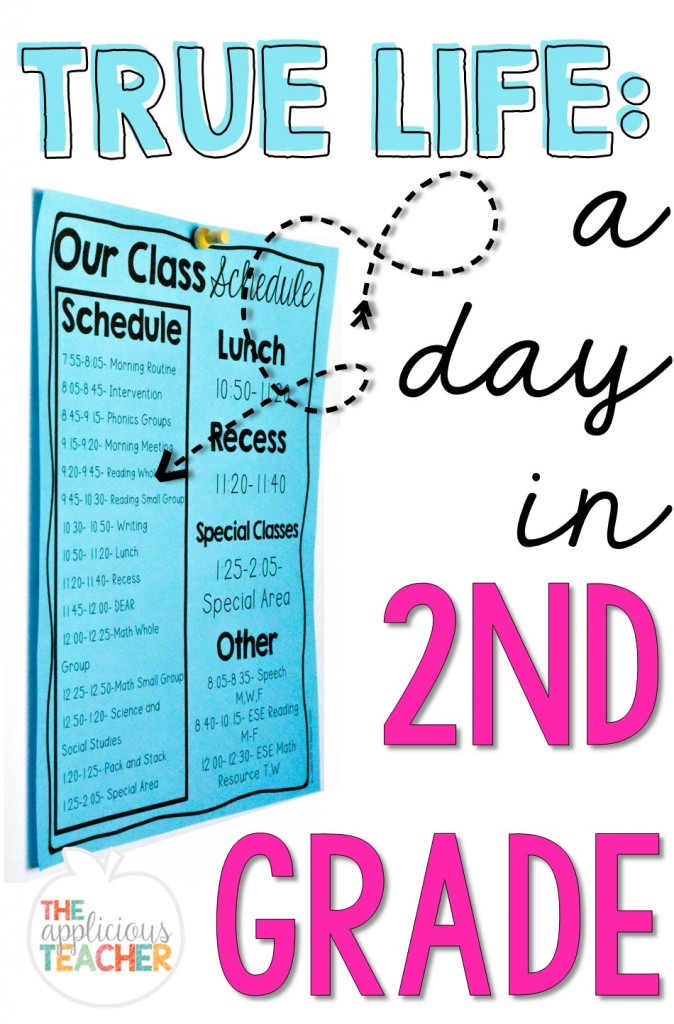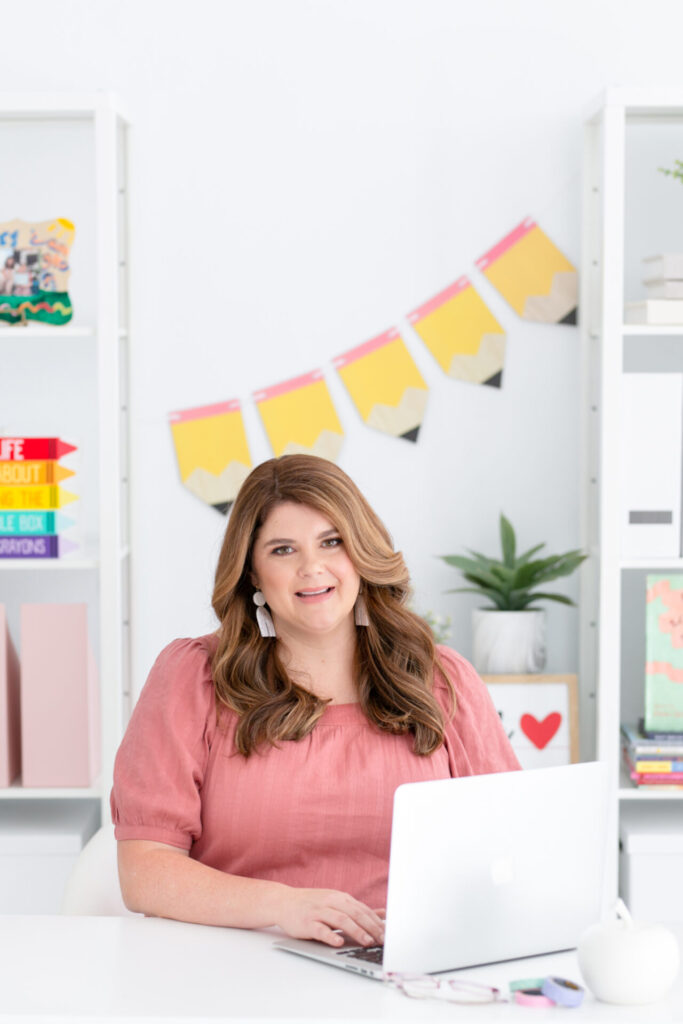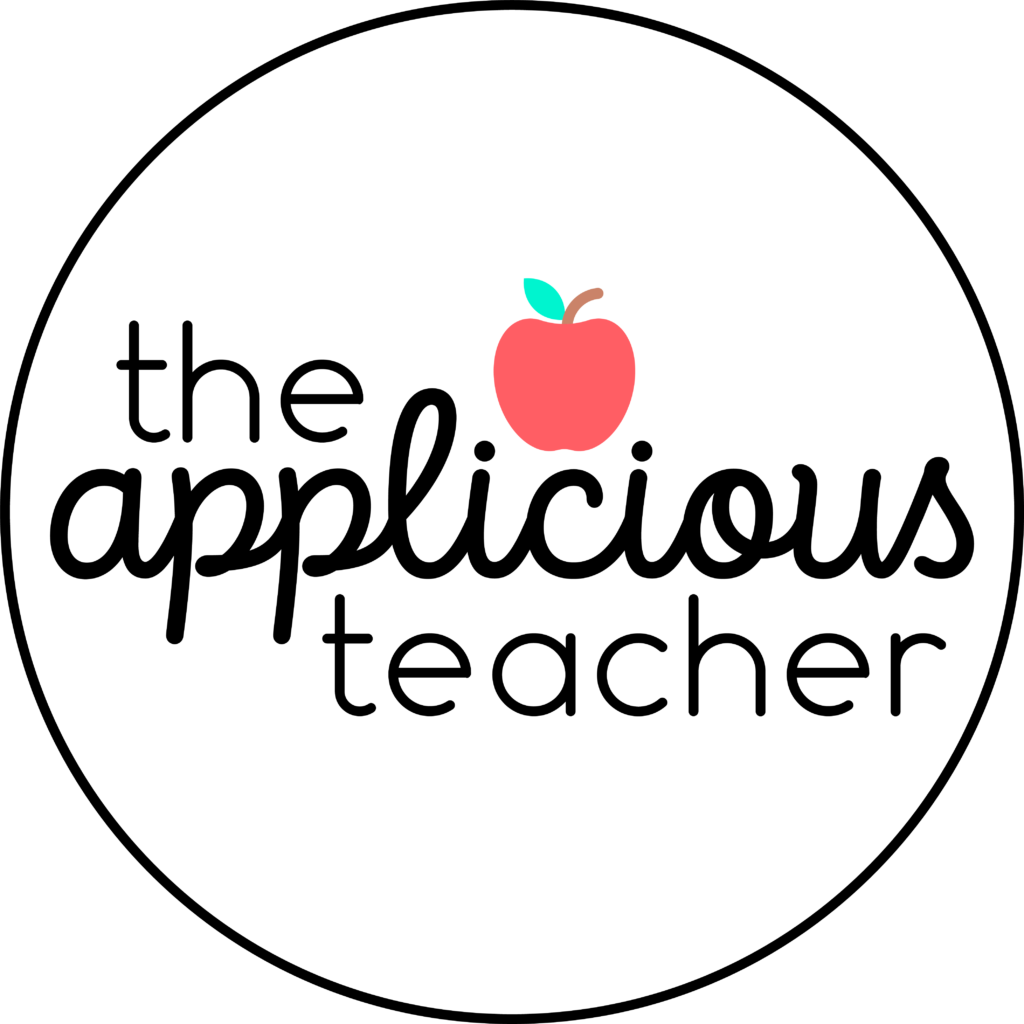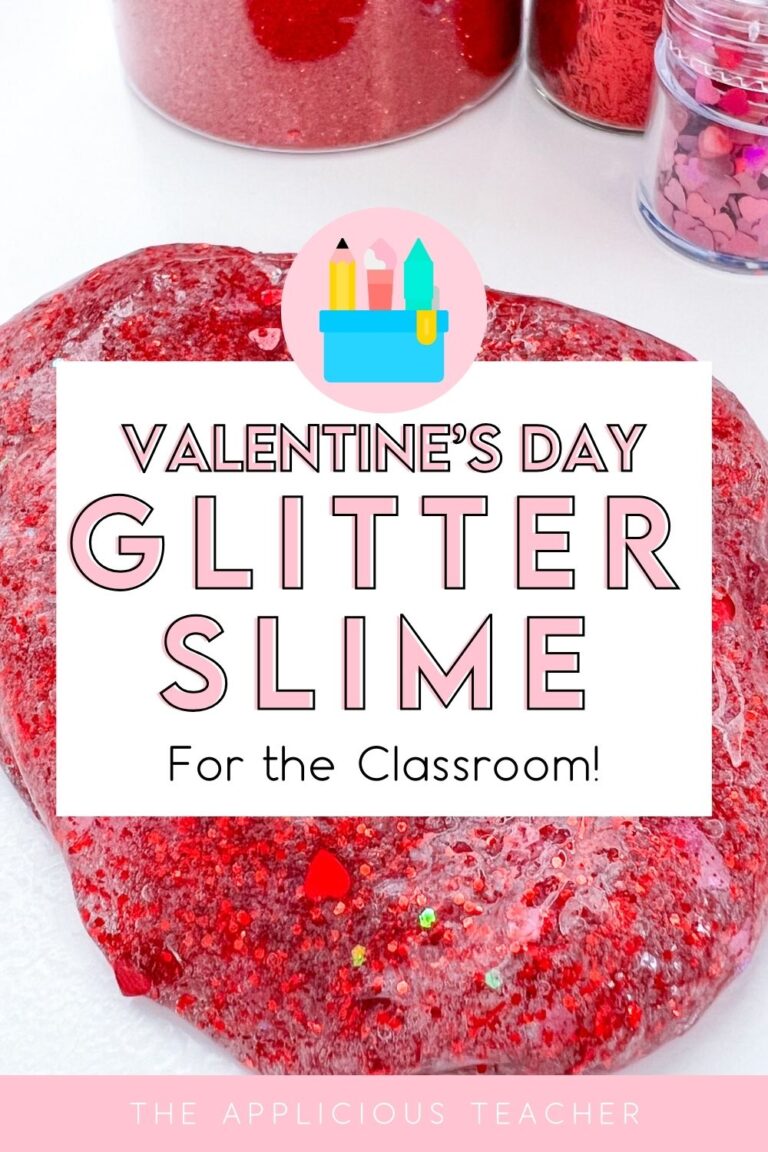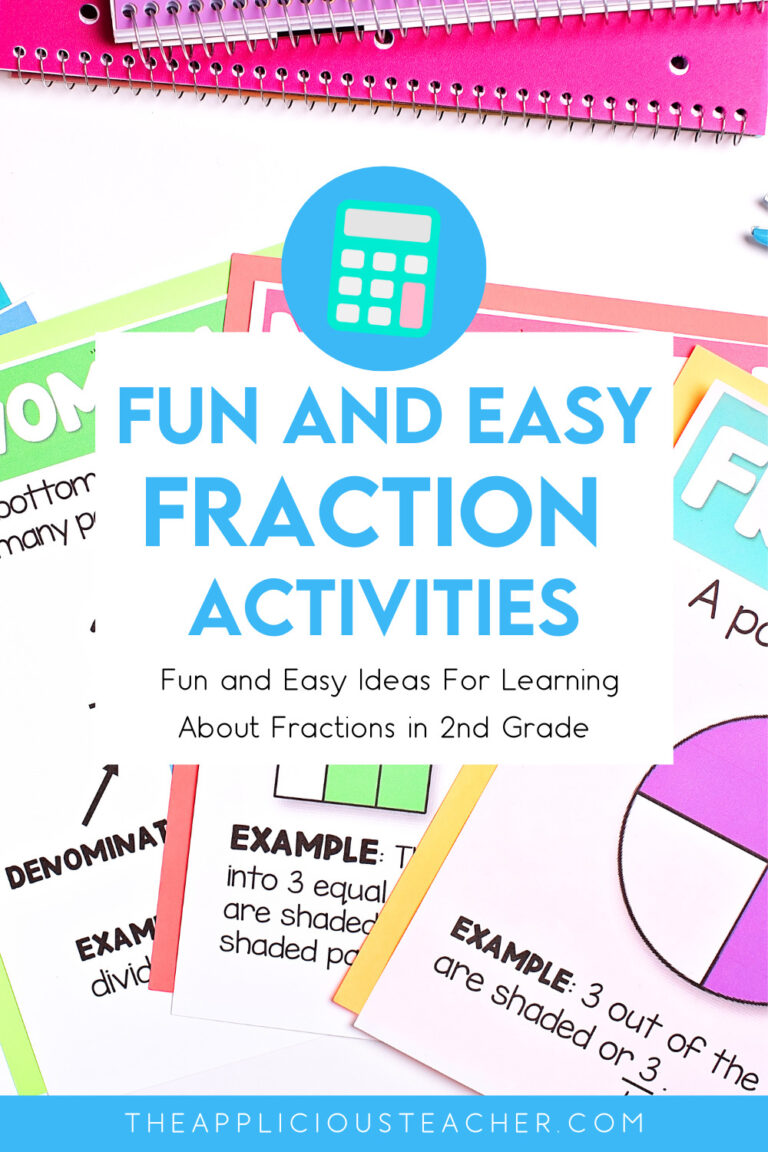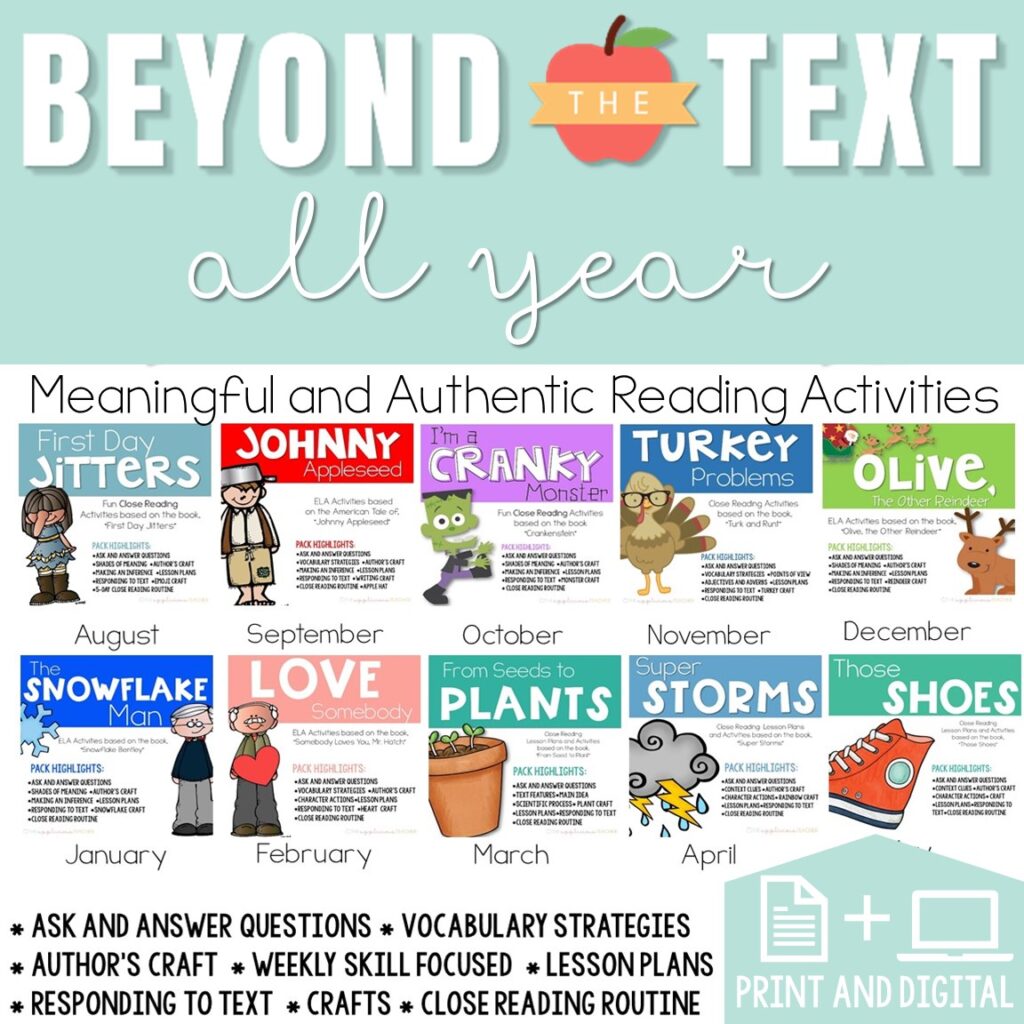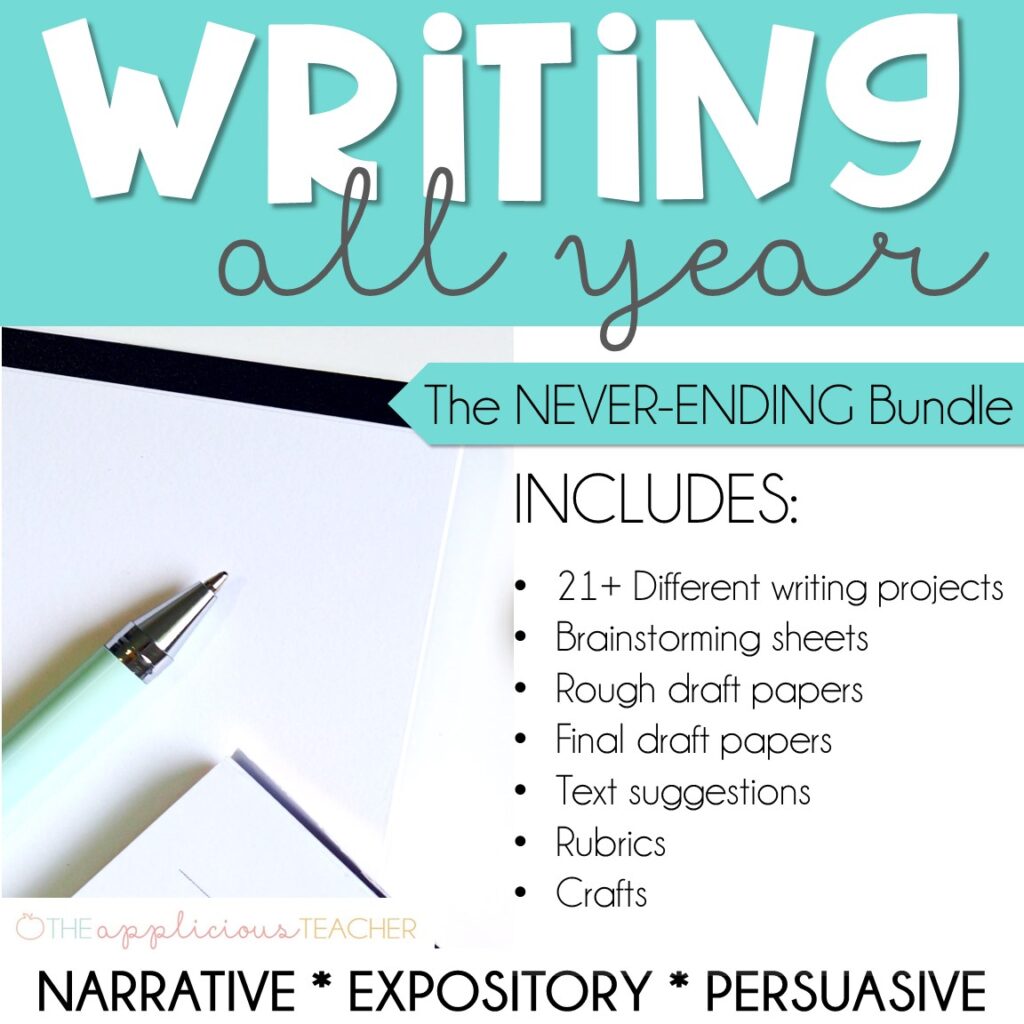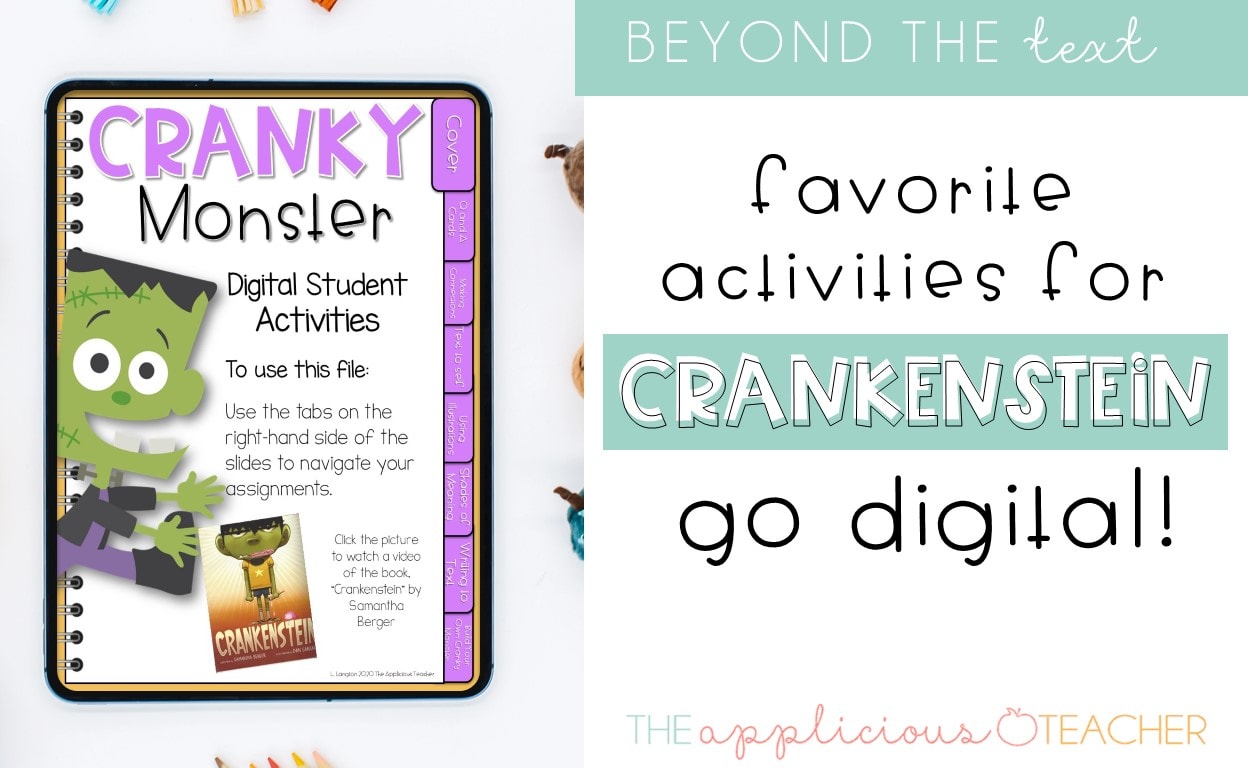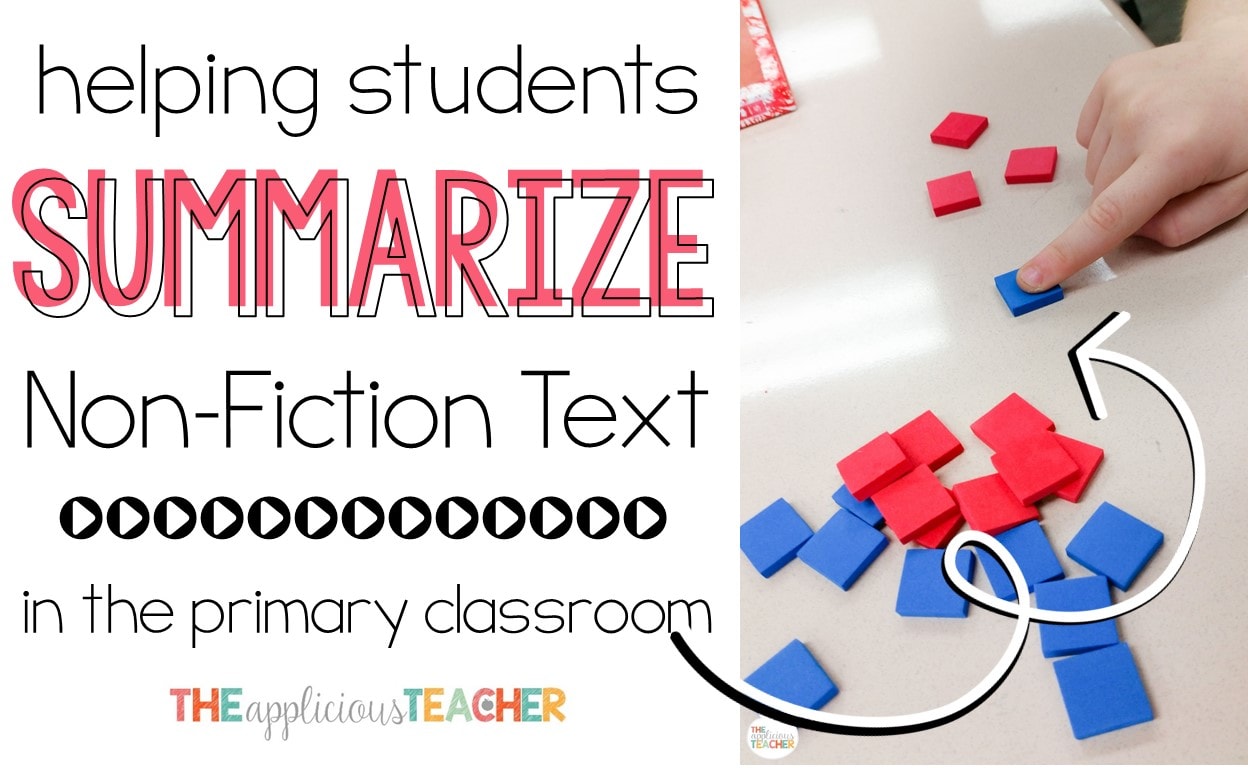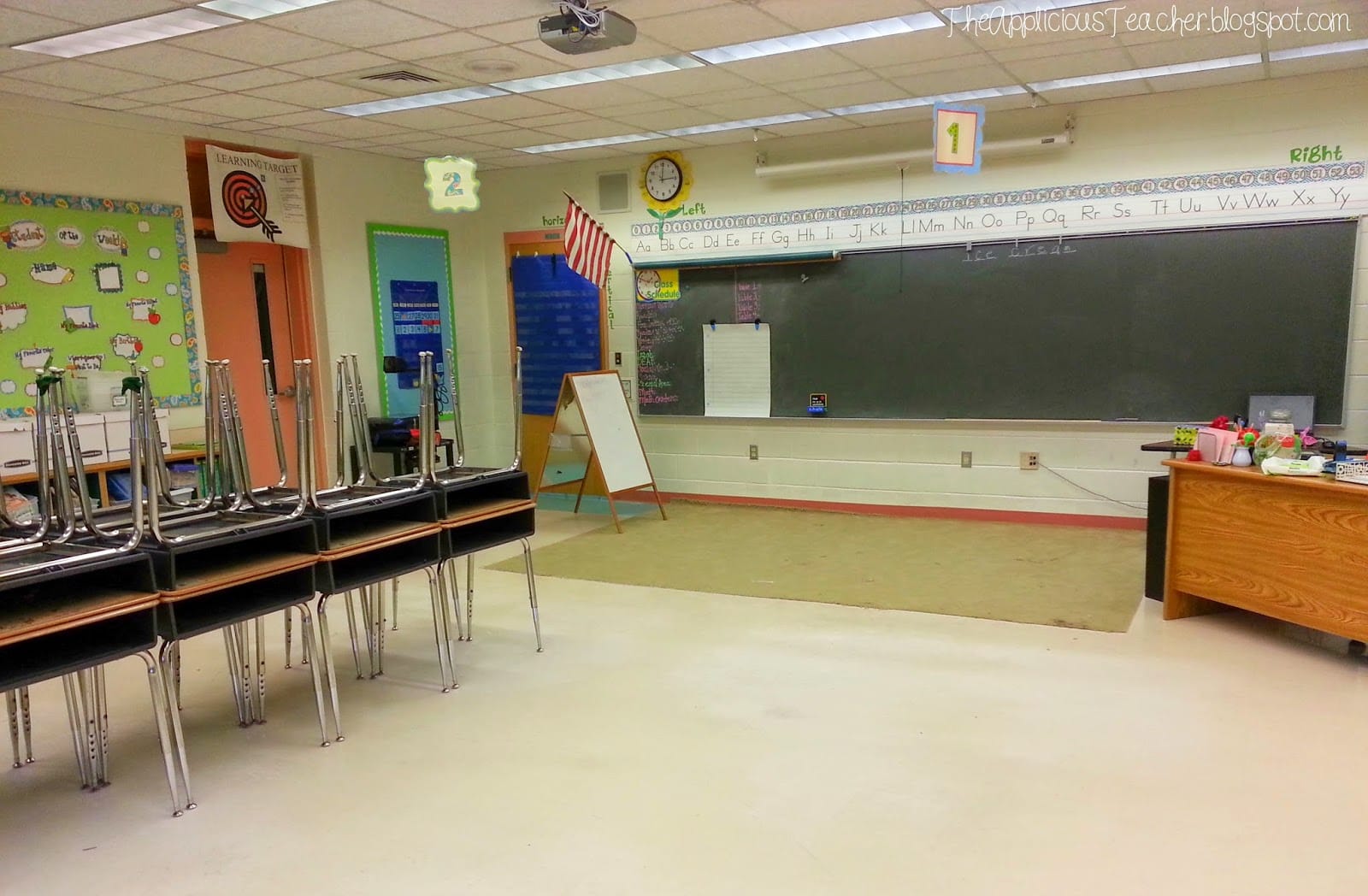A day in second grade can be busy, full of laughs, and of course TONS of learning, but if you’re new to the grade level, thinking about fitting in ALL those standards while keeping your kiddos engaged seems daunting! I get asked all the time…
“How do you fit it all in…?”
and the answer to the question is really not an amazing prepared answer. But it is an honest one…
Some days I do, some days I don’t, but every day I try.
So here’s a peek at how I arrange my schedule in second grade to maximize learning, but leave room for some of the fun stuff too!
A couple of things to consider about my schedule…
- I work at a Title I school. The majority of the students are on “Free or Reduced Lunch.” It also means that I am mandated by the state and my district to do certain routines, activities, or programs. It doesn’t mean I endorse them or think they are the best for my kiddos, it means that by law (educational law anyway… ) I have to do these programs to better my students.
- I work for a district that requires schools to have a “Master Schedule”. This means the school forms a committee or assigns an administrator to design the schedules for the entire school. You are expected to follow this schedule and adhere to it with fidelity. I have very limited control over my math, reading, and science times.
- Not all time frames are set in stone and some days I find that I am only able to get through half of what I planned to complete. There is always a balance between learning and time management.
So here’s a peek at how I arrange my schedule in second grade to maximize learning, but leave room for some of the fun stuff too!
Morning Planning: 7:30-7:55
This is the quiet before the storm. Most mornings, you’ll find me running around like a crazy women in the morning getting ready for the day at 7:36… being at school RIGHT at 7:30 is so not my style…but this dedication to being “fashionably late” is really just punishment for me. You can do a lot in 6 minutes I’ve realized. Like finish your make up, or set up for centers. Unfortunately, my three-year-old doesn’t seem to care about valuable morning planning…. so I start at 7:35… 36 most mornings.
Morning Routine: 7:55-8:05
School starts around here at 7:55 am. I greet my kiddos at the door and say good morning to each student as they enter. When my kiddos come in, they put away their backpacks and copy their homework into their planners. I work around the room to check planners for parent signatures. This is also the time that I am talking with my students about their weekend, games, recitals, and practices. Although this is a busy time, it is one of my favorites. After students have written their homework in their planners, they are off to complete their first intervention time for the day.
Computer Based Intervention: 8:05-8:45
Our first intervention time is first thing in the morning. It is done on the computer and all students participate. The program my district uses is called Waterford. The kiddos are given a “placement assessment” at the beginning of the year, then work through individualized literacy lessons from there. There is also a math and science component. My district requires that my students receive 20 minutes of reading and 20 minutes of math everyday through this program. While students are working through their lessons, I use this time to pull students for intervention. Sometimes I’m completing make up work, other times doing a reteach. Every once in a while, I’m helping with homework. Either way, the students that I pull to receive intervention will have to make up their missed time later.
Phonics Instruction: 8:45-9:15
Like I said, I’m a Title I school so we have A LOT of intervention time built into our schedule. Our phonics instruction time is another intervention time. As soon as my kiddos get off the computer, they head to their SIPPS classroom for differentiated phonics instruction. We use the phonics intervention program SIPPS to help build our kiddos’ foundational skills. If you’re not familiar with SIPPS, it is a spiraling program that allows for differentiation. Students are assessed at the beginning of the year and placed into specific entry levels in the program.
Since not all students are placed in the same grouping, my second-grade team shares our students. One teacher teaches one group of kiddos, while another teaches a different group. The lower groups have less students while the on-level groups and higher are much larger. This allows teachers with the lowest quartile performers to reteach and provide small group instruction. Students are assessed every 5-10 lessons and shifted as needed.
Morning Meeting: 9:15-9:20
As students finish their lessons with their phonics intervention teacher, they head back to their classrooms. Back in my room, students wait at their seat then we do a quick brainbreak using GoNoodle. The kiddos love this and I love using the time to allow for all my students to trickle back in from their SIPPS lessons.
After one video, students meet me down on carpet at the front of my room and we start our morning meeting. We discuss the date (no calendar time in 2nd grade, but we always discuss how to write and say the date!) Then, discuss any important upcoming events. Then we move to our learning objectives for the day and discuss the timing of the important things: recess and lunch. LOL! After morning meeting, it’s time to move into our core instruction!
Whole Group Reading: 9:20-9:45
What we do during our whole group reading time varies from day to day and week to week. A typical whole group reading includes a mini lesson of some sort and then a shared reading of a close reading text. This story might be read aloud by me or listened to through a read aloud on the computer. Sometimes, we’ll read the story together as a class. Then, we complete a guided lesson that focuses on one aspect of the story. This is followed up with an independent practice of the standard for that week.
This is the where we work on building our reading skills as a whole class. I could write 10 blog posts about whole group reading time in a second-grade classroom! There is just so much you can do in this time! I will say though, the majority of the time we are reading a text together and completing some sort of responding in our Reading Response Journals. Then, it’s time to apply our new skills during our center time!
Small Group Reading: 9:45-10:30
Quite honestly, I am used to having an hour for small group instruction time. But, because of the extra interventions in the morning, I am forced to cut my small group time down. To compensate for the decrease in time, I restructured my groups so maximize the time I was giving to each set of students. I also work to utilize my morning intervention time to meet with students who need more assistance.
To make sure I meet with every student each week, my class is split up into 4 groups. My lower groups only have 3-4 students in them, whereas my higher groups had 5-6. Students are grouped based on teacher observation, DRA assessments, Reading Test scores, and behavior.
To complete our rotations, I have 4 groups that complete 4 centers over a 2 day period. This means I get to see 2 groups a day for about 20 minutes each. I wish it was more, but the scheduling small group time in at all seemed almost impossible! Previously, I used to see 3 groups a day, everyday. That allowed me to see each of my kiddos everyday. Although that is still my preference, my schedule just wouldn’t allow it. The comprise of 2 days a week seemed better than only 1 day a week or not at all.
Our centers are as follows:
- Teacher Center
- Independent
- Technology
- Group Work
I could do 5 more posts about small group time in second grade, but I’ll keep what we do in each center pretty short.
- Teacher Center
- Guided Reading, word make and breaks, assessments, sight word practice, literature circles (for my higher students, then everyone later in the year) This is my time to build and refine my students’ reading strengths and weaknesses. Some weeks, we’d work on building fluency, and others we’d work on comprehension. Much of it depends on what my students needed that week as shown on the previous week’s assessments or teacher observation from the day.
- Independent
- Second grade is the year to build independence and I use this center to do just that. For this center, students would complete an activity from their group folder. Sometimes it might be a writing activity or other times it might be a reading and responding activity. The idea is that this is their time to work on their own. That didn’t mean they couldn’t sit next to a friend or read a book with a buddy. It just meant that they had to complete had to produce their own work by the end of the rotation.
- Technology
- My students’ favorite center! This center usually revolved around our 5 classroom Ipads and creation based apps. Students might create a mind map, record a video, conduct research, or read a few Reading A-Z books.
- Group Work
- This center is designed to completed as a team. Games, projects, posters…. if it requires a team effort, then it is found at this center. If you own any of my Center Days: Differentiated Literacy Centers packs, this is where I would place these centers for students to complete together.
You can read more about small group time in my classroom here.
Writing: 10:30-10:50
After we completed 2 rotations, students clean up their centers and head back to their seat. All center work gets placed in their green center work folder. If it wasn’t completed it can be finished later in the day. Then, we head into writing. Now, 20 minutes isn’t really long enough to have a complete writing lesson, so I would get VERY creative with this time. Sometimes, we’d just read a mentor text and discuss it, other times, I’d start a model writing with my students. Other times, I’d do a mini lesson. It just depends on where we were that week with writing. Whatever we didn’t complete, we’d wrap up after lunch and recess.
Lunch: 10:50-11:20
After our quick writing, we’d line up and go to lunch. In my district, teachers have a duty free lunch. Ahhh… time for the teacher to relax and reflect! I try to make a point to enjoy my lunch. No working lunches for this teacher!
Recess: 11:20-11:40
You ready for this? At my school, we have recess EVERYDAY! Ask any teacher and they will tell you kids need recess. Heck, teachers need recess. Recess is a win-win for all parties involved, but sadly when test scores and performance goals are the only things that matter, recess is the first thing to be cut. If the weather is nice, they got to play outside on the playground. If the weather was raining, then we’d head inside for a group game or for some unstructured student choice activities like drawing and playing games.
DEAR: 11:45-12:00
After heading in from recess and getting drinks to cool down (‘cuz here in FL the temps are above 85 most of the year!) the kiddos grab a book and start DEAR time. I know DEAR is old school… for those of you who don’t know, DEAR stands for:
Drop
Everything
AND
Read
and this time is dedicated to students selecting and reading books. On Tuesdays and Thursdays, I allow them to read with a buddy (which they LOVE) but DEAR time is for reading and that’s what they HAD better be doing. Let me please clarify something here… This is not a time for me to assess students while they read. I am not walking around asking students to read out-loud to me or probing them for the main idea of the paragraph, they just read. This is their time to find a special place and enjoy a book. Sounds joyful doesn’t it?
Now, DEAR time was also our “finish writing lesson time”. If for some reason we didn’t finish our writing lesson, I used these 15 minutes to tie up the loose ends. Those days, we don’t have DEAR time.
Whole Group Math: 12:00-12:25
After DEAR, students put away their books and head to the carpet for whole group math instruction. I almost exclusively teach ALL my whole group lessons on the carpet. It helps breaks up the day, allows for movement, makes for easier transitions, and eliminates desk distractions. I mean, have you ever tried to compete against the plastic on a name tag while you’re teaching a lesson on 3 digit addition? Hate to say it, but the plastic wins every time! So, the carpet is where the “magic” happens!
Our whole group math lessons varied from day to day and lesson to lesson, but we’d usually start our lesson with a “Number Talk”. I started this routine when I taught 3rd grade and LOVED the impact it had on my students learning, understanding, and speaking skills. I carried this routine back down to second grade and I suggest to anyone who wants to build a strong number sense in their class use this routine.
After our number talk, we’d jump into our lesson for the day. The majority of my whole group math lessons followed the gradual release model.
- Model- first I’d model the skill or idea we were learning that day
- Guided Practice- Then, together as a class we’d work through the problems
- Group practice- sometimes, I’d have the students work in teams of 2-4 to practice, or play a team game to reinforce the skill.
- Independent practice- This is my student’s time to fine tune their learning on their own while I work to pull students who struggled.
As students finished their independent practice, they could move on to completing our Math Centers for the week.
Math Small Group: 12:25-12:50
I’ll be the first to admit that small group reading instruction is not my passion. I know it is good for my students, so I do it… but I don’t look forward to it. But my small group math time? This time I relish! You can read more about the set up of the system I used here. But in a nutshell, once students complete their independent math activity they are free to select a math bucket to complete.
There are 5 math tubs for the week. Each tub contains one activity for the students to complete. The expectation is that students will complete all the activities by the end of the week. So what’s in the tubs? Fun and engaging games and activities. I have a whole section in my store dedicated to math centers. You can check that out here!
As students work through the buckets in groups of 3-4, I pull students to my back table. The first group I pull is always an intervention group. Followed by an enrichment group. If I have time, I’ll pull a mid-level group to reinforce a skill, or push an idea further. What I like about this time is how I can pick and choose who I see and for how long. This allows me to tailor my small group time to who needs it the most.
12:50-1:20-Science and Social Studies
Once we’ve finished small group time, we clean up and head back to the carpet for science or social studies. I love using themes to guide my lessons, so much of my content area is taught during reading through a thematic unit. This time is for experiments and projects! Things we don’t have time to do during our core reading instruction. Here we’ll glue things into our science journals, research important National Figures, or work on research projects. Students love this time and it’s a great way to end the day on a high note.
Pack and Stack: 1:20-1:25
After we’ve completed our Science or Social Studies lesson, it’s time to get ready to go home. I know what you’re thinking… wait, it’s only 1:20! But, because our Special Area time is so late in the day, students bring their backpacks with them to their Specials classes and we dismiss them from there.
Special Area: 1:25-2:05
In my district, students attend a special area class every day. At my current school, students rotate through PE, Media, Music, and Art. When I first started teaching, my old school had a Spanish class and even a computer class. One year, 3-5 graders had an additional Science Lab. Special Area classes offered vary from school to school, but PE, Media, Music, and Art are pretty standard.
After dropping off my students with their special Area teacher, I’m officially on my planning period. If I don’t have a meeting, then you’ll usually find me in my classroom running around like a mad women trying to get things ready for the upcoming week or the next day. That is… if I’m not talking to my teammates… I’m a gabber… and sometimes that means I grab right through my valuable 35 minute planning period! #canyourelate
At 2:05 it’s time to pick up my seconds and hurry them to their respected places for dismissal. Bus-ers line up and walk to the bus loop, after-school care kiddos head to the multi-purpose room, and I walk my parent pick up kids to our spot at the parent loop. I stay until all my kiddos are picked up. Most afternoons, I’m finished by 2:20 with parent pick-up duty.
End of the Day Planning: 2:05-2:30
So technically, I’m supposed to get another planning from 2:05 to 2:30, but most days that planning is spent at parent pick up with my seconds. When I finish at 2:20, I head back to the classroom and really get to work. Some days I have team meeting or faculty meetings. But if I’m not required to attend a meeting, you’ll find me working on lesson plans, review data, or cleaning up the mess from the day.
Even though contractually I only have to stay until 2:30, most days I’m at school until 4:30 or 5:00. There just isn’t enough time in the day to get it all done! I am one of those people who doesn’t like to bring things home, so I prefer to get as much done while I’m at school. If that means staying until 5:00 pm, then that’s what I’ll do, but most days I try to leave around 3:30 or 4:00. I gotta cook dinner and spend some time with my family, don’t I?
So that’s a peek into our daily schedule for 2nd grade! Told you… we don’t always get through it all… but we always TRY! What are some things that you do in your second grade classroom?
If you teach second grade, let’s stay connected! Sign up for my Second is the Best newsletter and receive perfect for second-grade content and resources straight to your inbox!
2nd is the Best!

Subscribe to our EXCLUSIVE for 2nd grade newsletter and get tons of PERFECT for you ideas, tips, and FREE resources delivered straight to your inbox!
Success! Now check your email to confirm your subscription.
